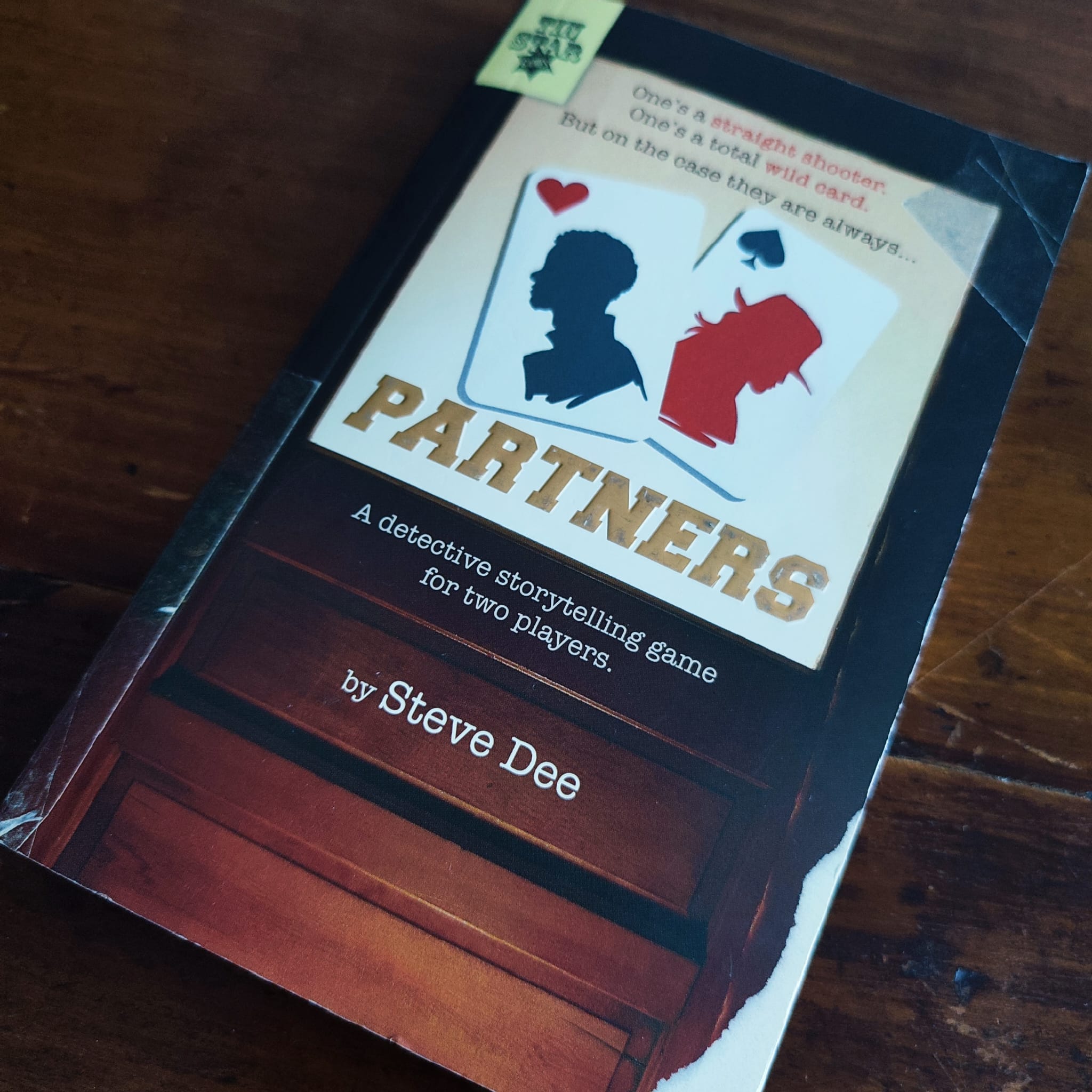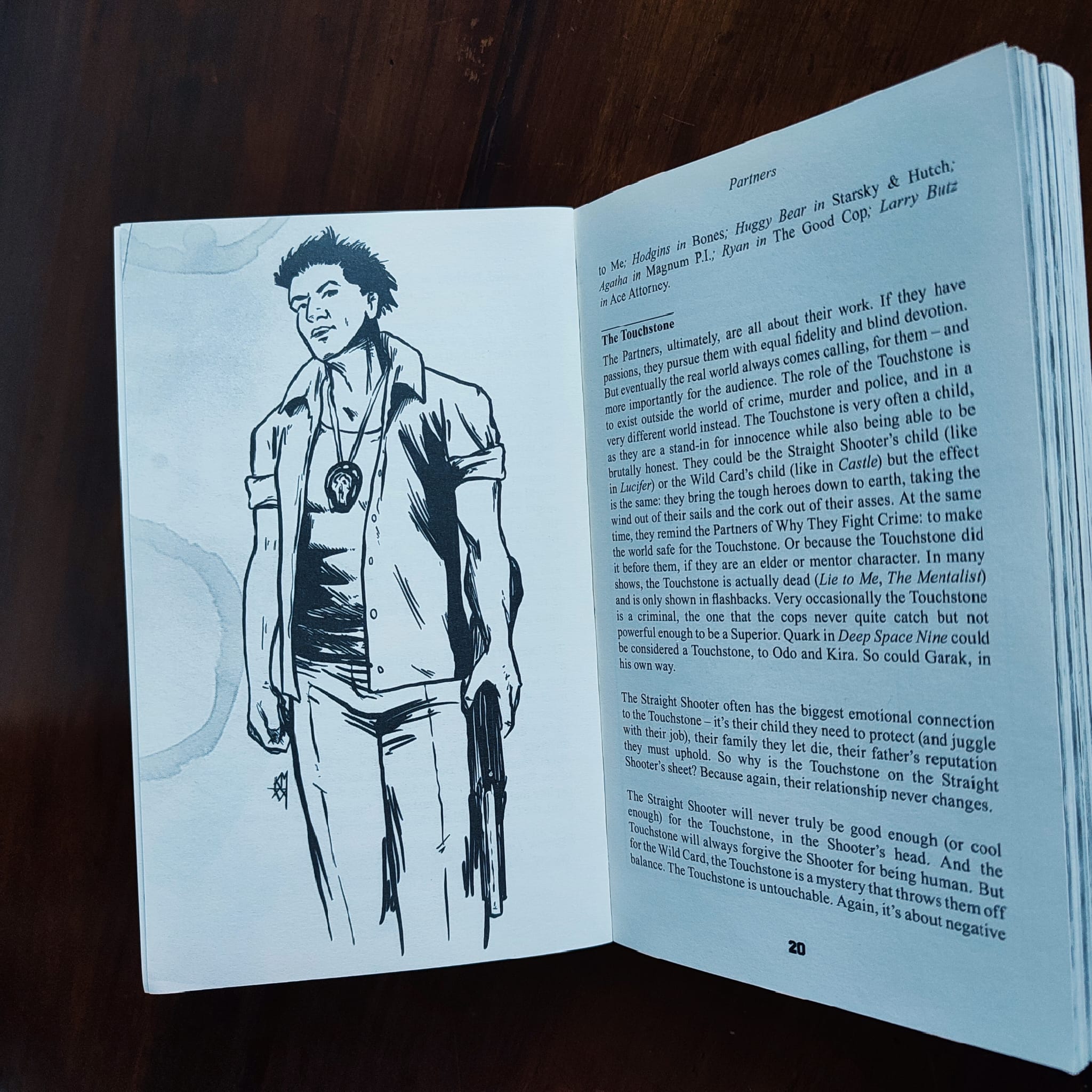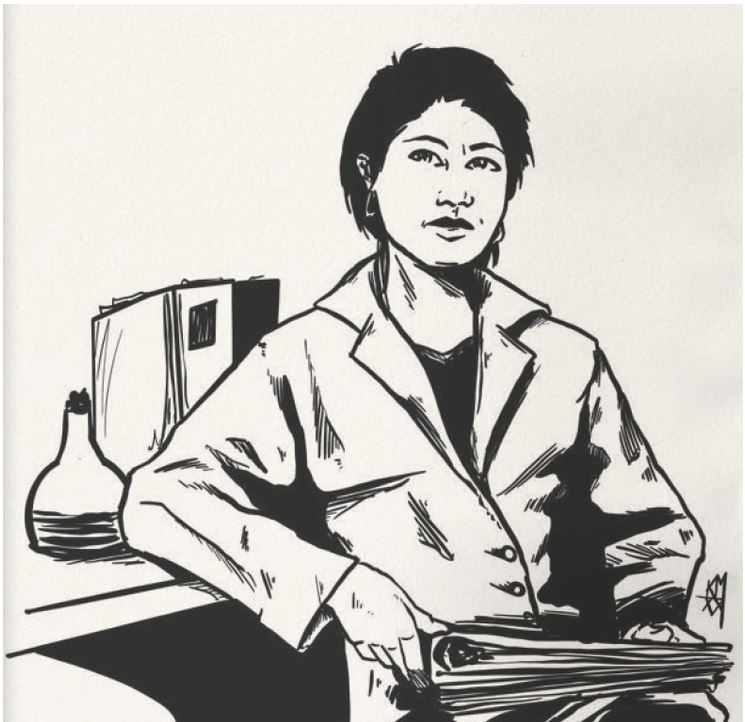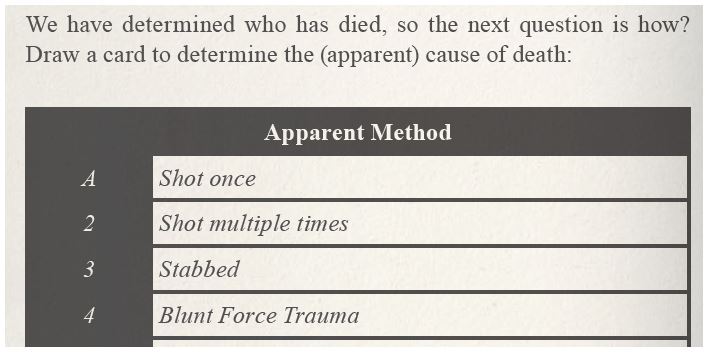This is our review of Partners, a role-playing game for two players (but nothing prevents us from expanding the group up to 6 participants) inspired by the crime series of the 80s. Published by Tin Star Games, it comes from the prolific pen of Steve Dee, who was so kind to send us a copy.
The manual can be purchased here in digital version at the price of 20 Australian dollars (about 15 euros) or in the physical copy on the website of the publisher at the price of 50 Australian dollars (about 35 euros).
The author describes the game as a love letter to the crime TV series of those years when the case to be solved was almost a justification for exploring the dynamics between the characters. Just like in a crime-related TV series, in fact, each Partners session focuses on a mystery to be faced in order to keep one’s job and obtain the trust of the boss.

Reading the manual, series like Moonlighting or Warehouse 13 came to my mind. However, nothing prevents you from imagining science fiction scenarios like those presented in Killjoys or modern re-editions of great classics such as the well-known Sherlock.
Partners Setting Review
Partners, as we’ll see in this review, doesn’t have its own setting. However, the game makes a very clear reference to a certain television and film genre: that of the crime investigation. The game setting can therefore be a modern city, Victorian England, a lunar colony, a city with a gateway to hell; practically anything you want to play within the specific genre of crime investigation.


Dynamics of the Couple
In Partners, players are encouraged to create characters that clash with each other. The protagonists’ approaches to work or to human relationships are so mismatched that they inevitably argue.
This approach may perhaps scare you at first; we guarantee you, however, that it takes just a little time to find the perfect affinity between the characters and embark on long and very interesting sessions to solve, side by side, one case after another.
The Game System
Partners‘ ruleset is dynamic; the two players talk to each other, bouncing their ideas on the case, draw cards and use random name generators, reworking the information to solve the riddle they face.
So it is a game that, in its original form, does not involve the presence of a narrator. The players draw a series of random cards that gradually generate the session case. Each new card drawn can reveal potential suspected people or clues for characters to consider. By following the hints provided by the deck of cards, players can visit the key locations of the investigation and the police station to find the next clue and follow a new lead.

You also need a deck of cards to play. Many times during the sessions you will discover clues and new leads by drawing from the deck and comparing the card with practical tables. If the cards weren’t enough, you can also use a random word generator to add absolutely random clues.
Every time the story proceeds, one or more cards will be drawn to provide clues and possible suspected people. This does not exclude that, instead, scenes related to the private life of the two detectives can be added, so as to create secondary plots. For example, a scene might be centered around a dialogue between a subordinate and his superior without either of the protagonists being on stage. If instead you decide to create a stronger secondary storyline, each secondary scene could be linked to reveal how one of the two investigators deals with a problem in her personal life.
Review of the Partners Handbook and Its Aesthetics
Those accustomed to huge manuals full of glossy illustrations will find themselves stunned by the Partners manual. The volume has just over 130 pages in paperback format and seems much smaller than a roleplaying manual. This shape, as we will see in this review, has the undoubted advantage of being easily transportable.
Its dimensions, however, should not be misleading. Everything in this manual is precise and perfectly consistent. Particularly noteworthy is the “old-style” cover; the binding is solid and allows you to consult it without the risk of ruining it.

The illustrations by Kristopher Neal McClanahan are very themed and give the text the right retro style; this effect is made even more evident by the fake coffee stains spread throughout the volume.
Characters Creation in Partners

Partners is designed not only to be played by two players but also to simulate certain couple dynamics typical of a crime TV series. The two protagonists in fact have a specific and sometimes stereotyped denomination. If you’ve seen the Lethal Weapon movie series, the similarities will be immediately recognizable. Roger Murtaugh, played by Danny Glover, is the understanding policeman, the law-abiding and empathic one, in the game called Straight Shooter. Martin Riggs, played by Mel Gibson, is instead the reckless, slightly crazy character, the one always over the top, in the game called Wild Card.
A TV series or a crime movie, however, has a good number of supporting actors, therefore the two players generate a total of six characters. They begin by deciding who will play the Straight Shooter and who will play the Wild Card. Once the character has been chosen, the dedicated sheet must be filled out by answering the questions concerning her. Only afterward you will compare these notes to mix everything in a consistent way. This is followed by the generation of four supporting actors to be distributed among the two players or among any guests.

These supporting actors can help or hinder the characters in solving cases. Typical examples of supporting actors are the district chief, the ballistics expert, and the forensics technician. Once the cast and crew are ready, it is time to start the case.
Building a Case
The construction of the case is completely random; the players extract cards from the deck, an operation that must be repeated every time the story unfolds. In this way they create, by drawing one card at a time, a victim and the list of possible suspected people. In this sense, the manual provides a series of very useful tables for deciding randomly how the events unfolded. So most of the focus stays on the detectives.

Each case unfolds through different scenes that serve to reveal information and details about the various suspected people. So many elements are discovered: in what relationship they were with the victim, any secrets among them, if there were any diatribes and the possible causes of conflict. As the case progresses, more cards are drawn to determine, based on the reference on the table, what suspected person is at the center of the scene and what clues are revealed. For each episode (making a comparison, a game session can be attributed to one episode of a TV series) up to a dozen investigative scenes are provided.

Conclusions of Partners Review
As we’ve seen in this review, Partners was designed to satisfy everyone: experienced RPG players, mystery writers and beginners who love the detective genre. Partners is the perfect game for anyone who is never tired of solving mysteries and bickering along the way as only a movie couple can do.
It is an excellent product, with undoubted advantages linked to the small size of the manual; it is great for one-shots or even to face entire investigative seasons, just like our favorite crime series.

